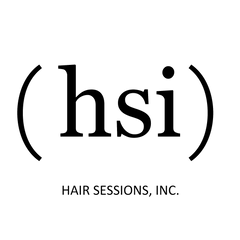Hey there, folks! Let's dive into the wonderful world of weaves together, shall we? We all love getting our hair done, and usually, we put our trust in the hairstylist because, hey, that's their job, right? Well, here's a little secret for you: being a hairstylist doesn't automatically mean they know everything about hair.
That's why it's essential for customers to have some knowledge about the things you spend your hard-earned money on. With this ultimate weave glossary, you won't have to rely solely on someone else's word. You'll be able to follow along and truly understand what's being discussed when it comes to weaves.
So, let's get started! Here's a detailed glossary of everything you need to know about weaves:
1. 360 Frontal
This is the big boss of frontals! It covers the entire perimeter of your head, and installing it is a breeze. By sewing the tracks to the middle, your style is good to go. Just remember not to sew it down on the edges to prevent any slipping. You can use adhesive glue for some extra security.
2. Bundles
Ah, the trusty bundles! This is a term used in the hair industry to describe how the wefts of hair are packaged. They usually come in plastic packets or are rolled together with a ribbon, looking like a bundle of hair. It's how you'll typically receive your lovely locks.
3. Bonding Glue
When you're gluing tracks onto your scalp or cap, bonding glue is your best friend. Apply it along the seam of the track, press it onto your head for about five to six seconds, and voila! If you want to ensure it stays in place, you can use a blow dryer or some hair spritz with a little heat.
4. Bond Protective Shield
This nifty product comes in handy during a quick weave to protect your hair from any glue damage. After washing and drying your hair, simply coat your entire head with the bond protective shield until it hardens. A blow dryer can speed up the process, too.
5. Braid-in Bundles
As the name suggests, braid-in bundles are extensions that are installed by braiding them into your hair. Unlike glued, threaded, or clip-in styles, this method doesn't require any of that. The top of the weft has about four inches of hair, which gets braided into your hair to hold the weft securely. No worries about shedding either!
6. Cornrows
Ah, cornrows, the classic go-to style when prepping for a weave or wig. It involves using your hands to gather sections of hair in an upward or continuous underhand motion, resulting in a raised pattern on your scalp. Depending on the weave style you're going for, there are different cornrow patterns to choose from.
7. Closure
Picture a 4x4 hairpiece that gets added to the top of your hair when you're doing a weave style. It's sewn onto a lace material and gives you the ability to part your hair in one section. It's a small but mighty piece!
8. Crochet
If you're looking for a quick and easy style, crochet is the way to go. The hair comes pre-styled, and you use a crochet hook or latch hook tool to install it by weaving it through a braid. Just keep in mind that your hair needs to be braided beforehand to provide a base for attaching the crochet hair.
9. Density
Density refers to how thick or thin the hair extensions are. It is usually categorized as low density, medium density, or high density. Low density gives a more natural and lightweight look, while high density provides a fuller and more voluminous appearance. Choose the density that matches your desired hairstyle.
10. Frontal
A frontal is a hairpiece that covers the entire front hairline from ear to ear. It is similar to a closure but larger in size, allowing for more versatile styling options. Frontals are typically made with a lace or silk base and can be sewn or glued in place.
11. Lace Closure
A lace closure is a hairpiece that is used to close off a weave or wig installation. It is typically made with a lace base that mimics the appearance of the scalp. Lace closures can be sewn or glued down, and they provide a natural-looking hairline and parting.
12. Weft
A weft is a track or strip of hair extensions that is sewn or glued onto your natural hair. Wefts come in different widths and are available in various materials, including human hair and synthetic hair. They are the building blocks of a weave or wig installation.
13. Wig
A wig is a complete hairpiece that covers the entire head. Wigs can be made from human hair or synthetic materials and come in a variety of styles, lengths, and colors. They provide a quick and convenient way to change your hairstyle without altering your natural hair.
Now that you're armed with this "weave glossary", you'll be able to confidently discuss and understand different weave techniques, terms, and products. Remember, knowledge is power, especially when it comes to your hair! So go ahead and rock that fabulous weave with confidence. Happy styling!
Cheers!
Lance McBrayer


Leave a comment